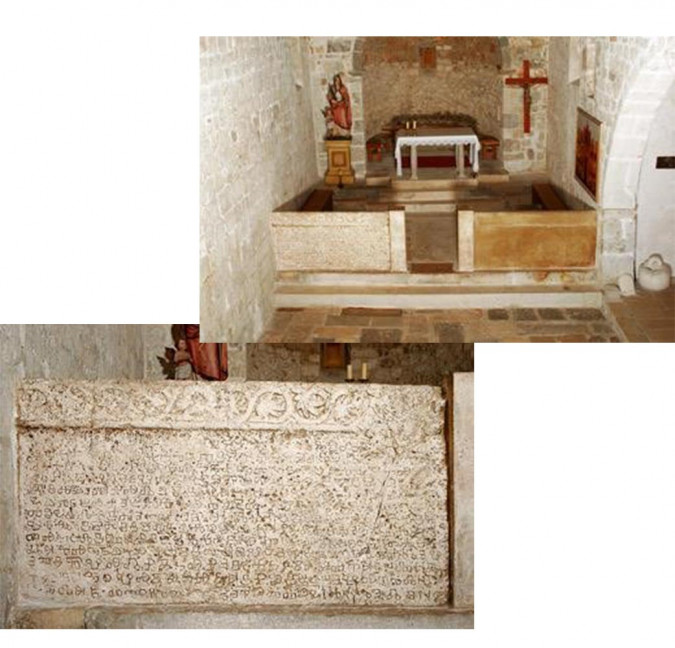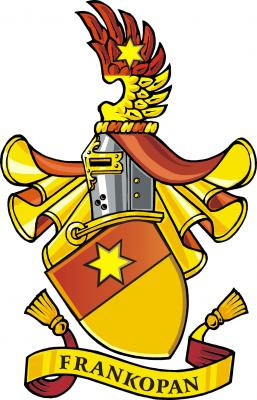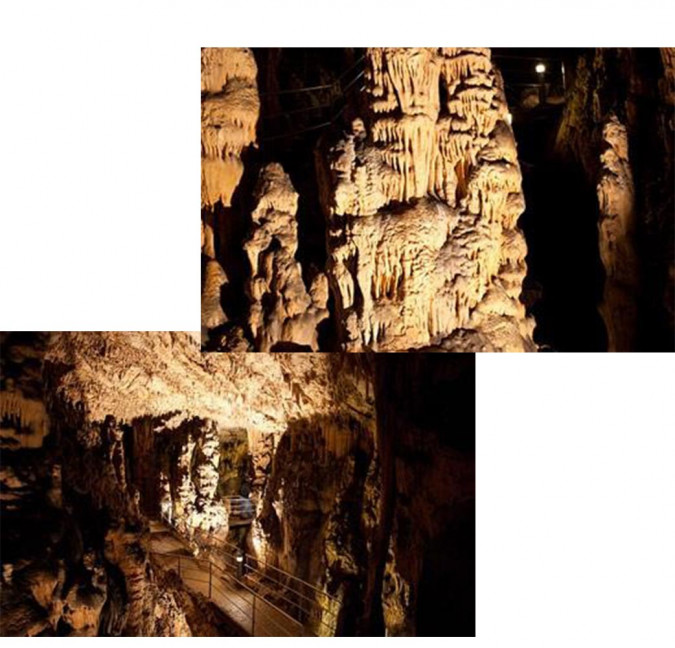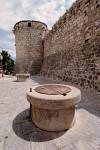Sights
The Baška tablet
The Glagolitc alphabet was created by the stylisation of Greek cursive around the middle of the 9th century.
Saint Cyril is mainly mentioned as the author of the Glagolitic alphabet who used this alphabet for his translation of ecclesiastical books into the ancient Slavic language.
The Glagolitic alphabet appears in two variants: rounded and squared. Supposedly these characteristics were developed later. The oldest Croatian monument written in Glagolitic alphabet, the Baška tablet, is partly written in the round variant, but the specific Croatian variant of the Glagolitic alphabet is the squared variant.
It was first mentioned in Croatia in the 12th century and it is most common in coastal parts of Croatia (Istria, the Croatian Littoral, Dalmatia, Zadar and Kvarner island, initially on the islands of Krk, Cres and Lošinj).
In 1851, a young priest from Baška, Petar Dorčić found a large stone tablet inscribed with Glagolitic symbols in the soil of the early Romanic church of St. Lucy in Jurandvor, near Baška. The text written on the tablet was of great interest for scientists of the period. It became an important source of information regarding the development of the Croatian Glagolitic alphabet as well as the Croatian language and culture. It proved the existence of the Croatian state fromits earliest days; mentioning the name of the Croatian king, Zvonimir and marks the northern borders of his kingdom on the island of Krk.
The text on the tablet was partly read in 1865 and completely in 1875. It was believed that the tablet included secret data, but it was later established that the tablet was the certification of the donation of land which king Zvonimir donated to the Benedictine monastery of Saint Lucy. The tablet lists the witnesses of that deed of donation and describes the time in which the donation took place. It can be established from that part of the text that the tablet dates back to 1100. In 1934, the tablet was, transferred to the Academy of Science and Art in Zagreb where it still stands today. A copy of it is also exhibited in the church of St. Lucy. The church and the partly renewed monastery complex today attracts many visitors.
Small copies of the tablet can be bought at the souvenir shops.
Princes of Krk Frankopan
The family of the noble Frankopan family originates from the Krk princes, and is mentioned in documents from the XII. century. Under the name Frankopana, history records them from 1430. The city of Krk very carefully preserves the tradition of this noble family, which, along with the Zrinski family, is proudly called the magnates of Croatian culture and history. They were greats in the economic and political field, in the eternal struggle for the independence of Croatia. In this endeavor they perished, in this endeavor their kindred was destroyed: on April 30, 1671, at 9 o'clock in the morning, in front of the town armory in Wiener Neustadt, they were sentenced to death. Along with special funeral ceremonies, their remains were transferred to the tomb behind the main altar of the Zagreb Cathedral on April 30, 1919. There, with the pilgrimage and respect of the entire Croatian people, they still lie today.
Krk was one of the strategic Frankopan towns that still inherits the very well-preserved Frankopan castle on Kamplin Square - an ideal natural scene and backdrop for summer cultural events, and the Rector's Palace - the Krk residence of this family. It is worth visiting the family chapel in the cathedral - a fine example of the Gothic style. In addition to this material heritage, Krk strives to preserve the memory of the Frankopans by reviving the spirit of their time through various events that take the city back to the Middle Ages, back to the Renaissance and silently pass costumed prince and princess, commoners, pageants, archers…
Cave Biserujka
Visit the cave "Biserujka". The existence of this cave has been known near Rudin or above Slivanjska uvala for more than a hundred years, when its interior (with a cave-shaped entrance at the time!) Hid and aroused interest in unknown secrets and the beauty of its calcite ornaments. From the time of the story, that the treasure of a smuggler was hidden in it, until the first entrances of interested visitors, its passages were gradually arranged and people moved more and more freely.
The illumination of the cave significantly increased the interest in the existing wealth of the underground gallery of numerous stalactites, stalagmites and calcite pillars. With its length of approximately 110 m and the size of its underground space, the interior really delights with its beauty and interesting precipitated shapes. The temperature in the cave is from 10 to 13o C throughout the year, and occasional seepage, dripping from the ceilings or wetting in the underground is only after rainy periods. Arranged and safe paths through the cave are accessible to everyone - from children to the elderly.
Contact: Šiloturist - Tourist trade
At Vodice 2
51515 ŠILO
Tel / fax: 00385 51 860 171
Gsm: 00385 98 211 630
Gsm: 00385 98 326 203
e-mail: siloturist@ri.t-com.hr
web: www.siloturist.com
City walls
The various layers in the ramparts with which the city is dangerous in its entirety, and which have been preserved to this day, were built from the time of the Illyrians to the fall of Venice. The first mention of today's walls is from the 1st century BC. The last important reconstruction of the ramparts was at the end of the XV. st.
Frankopan fortress built from XII. to XIV. century,
of which the reports of the Venetian providors speak.
The fort had several purposes: it protected the city from attack from the sea,
and the square tower served as a courtroom. The height of the walls is 9 m.



